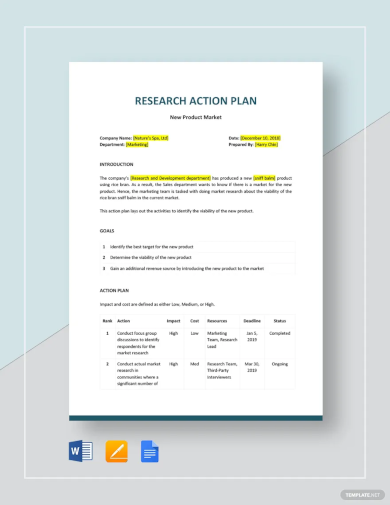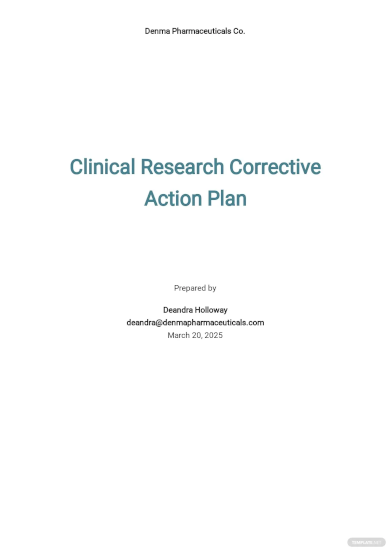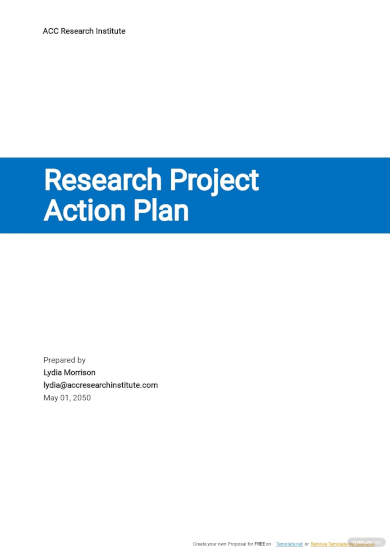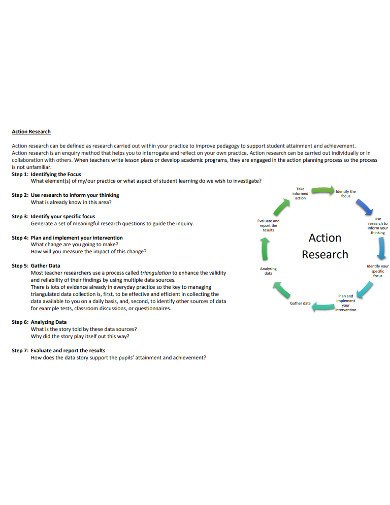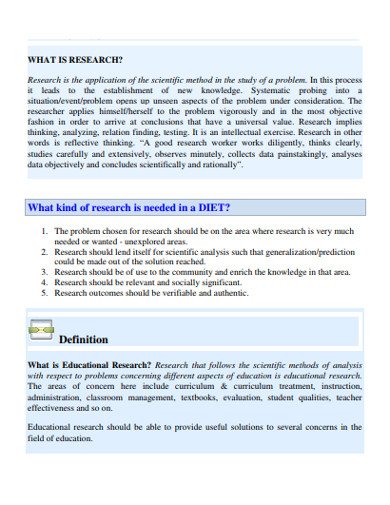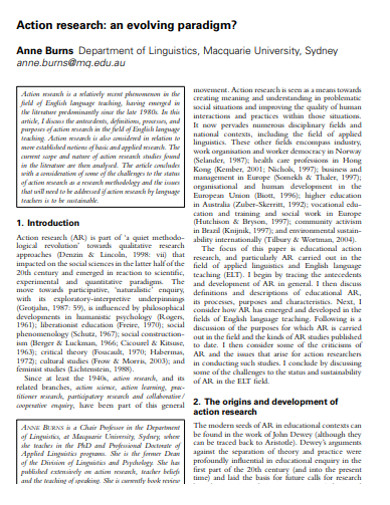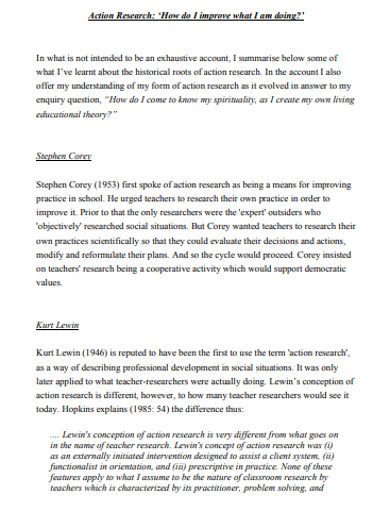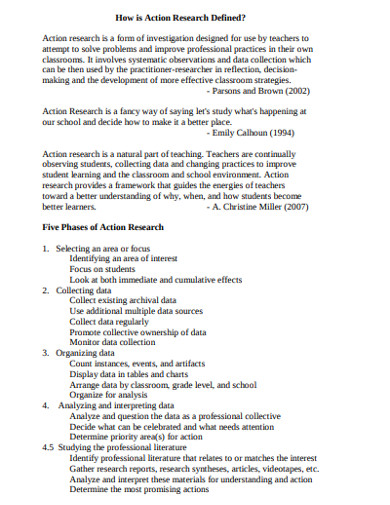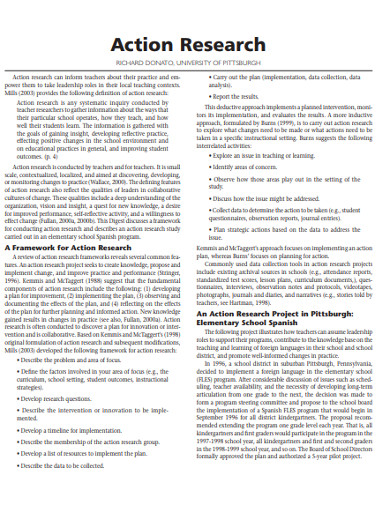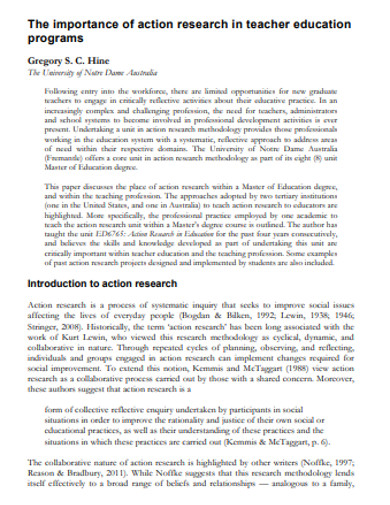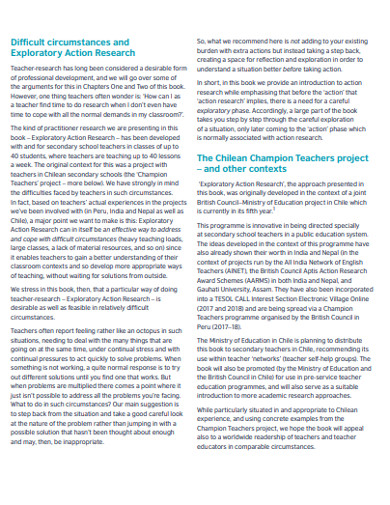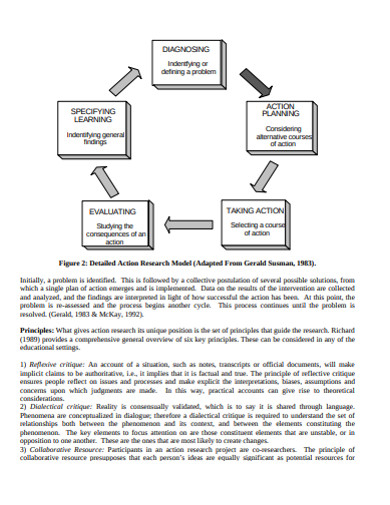13+ Action Research Examples to Download
Understanding and analyzing your actions is vital for self-improvement. It would help if you recognized how your actions affect your future. Examining your progress is called action research. This method applies to psychology, marketing, and education. Action research is used by teachers to find solutions to problem areas or formulate research plans for factors that need improvement. The results of action research are useful to the participants since it helps them better themselves for the next tasks. This research has guaranteed relevance because the researchers get to decide what the focus of the study is. They are also the ones who will make use of the results.
Every action someone makes has a ripple effect on the future. One small act of kindness can lead to great fortunes. Likewise, any lousy act can turn into something terrible. A person’s mistakes are what makes him who he is today. Ziad K. Abdelnour even said, “Never erase your past. It shapes who you are today and will help you to be the person you’ll be tomorrow.” For one to grow as a person, one needs to be able to recognize one’s mistakes and learn from them. Perhaps you need to create an action plan or conduct action research to help yourself out.
The Power of Three
Not all types of research are useful for all fields; some are effective only on specific studies. Luckily, action research can serve many disciplines. Although most applicable to educational research settings, the action research design works for an endless variation of studies. This research approach can also be used by individuals or by groups of researchers. The difference in researchers also signifies a difference in purpose.
Reflective Practitioner
When an individual practitioner decides to look into his way of teaching, he unconsciously analyzes his actions to improve the instruction. The more he studies himself, the more he masters the science and process of it all.
Large-Scale Progress
In education, as the school progresses, the students progress with it. That is why many schools continuously seek ways to strengthen their instruction to build schoolwide improvement. When instructors come together to fix a single issue, organizational growth is bound to occur.
Professional Culture
Medical and educational professionals don’t always agree on particular methods. Sometimes they need to do what they think is appropriate. The only important thing is that they lean towards the same organizational goal. With their differing approaches, they can share their own discoveries to their colleagues, making for more holistic improvement.
13+ Action Research Examples
The best way to improve yourself is by analyzing your actions and making adjustments along the way. This is a research method called action research. To help you further understand what action research is, here are multiple action research examples you can check out.
1. Research Action Plan Template
2. Research Corrective Action Plan Template
3. Research Project Action Plan Template
4. Sample Action Research Example
5. Action Orientation Research Example
6. Art Article Action Research Example
7. Basic Action Research Example
8. Five Phases of Action Research Example
9. Standard Action Research Example
10. Action Research in Teacher Education Example
11. Action Research Support Notes Example
12. Handbook for Action Research Example
13. Action Research in PDF
14. Action Research for Professional Development Example
Segments of a Cycle
Action research is an approach that lets an individual study one’s action to help enhance their basic skills and knowledge of a given task or topic. There is a cycle that this research follows to make continuous improvements to a group or individual. As with any research projects, there are steps you need to follow to accomplish your project goals.
1. Selecting Focus
The action research cycle begins with identifying an area that you think needs improvement. Only the researcher can assess if the research focus is worth the time. The outcome of the focus should be the betterment of a practitioner’s work. Thus, picking the right center is extremely important.
2. Clarifying Theories
The next step is figuring out what approach works best for the problem area. You can try out different methods to solve your problem. This way, you can identify what process flow you are going to follow for the duration of the research. Studying various methods, beliefs, and theories can help you decide what you feel is most effective.
3. Collecting data
Your data should be valid and reliable to guarantee improvement. That is why it would be wrong to just stick to one source of data. If you can find various academic references to answer any of your questions, you should utilize them. This way, you can match the right technique with the unique qualities your research holds.
4. Analyzing Data
When conducting data analysis, you need not use complex calculations and statistical methods; you just need to examine the data you have collected. In studying the patterns and trends in your research data, you just need to answer two questions. What story does the data tell? Why is the story executed this way?
5. Report
In a day, teachers face more students than fellow teachers. That’s why, given a chance to speak with their colleagues, teachers make share their discoveries from their research. This way, they get to express organizational knowledge they think is useful for other teachers while gaining insight as well.
6. Action
The last step of the research action plan is, of course, to take action. This part is where teachers make their lesson plans. This part is satisfying to teachers because they feel they have gotten wiser with every piece of knowledge they have uncovered.
Everyone should learn from their mistakes. With every trial and error is a new way of looking at things. You just need to be vigilant with all your actions and know that there is always a better way of doing things. Once you’ve refined your skills, you are sure to become a master.



